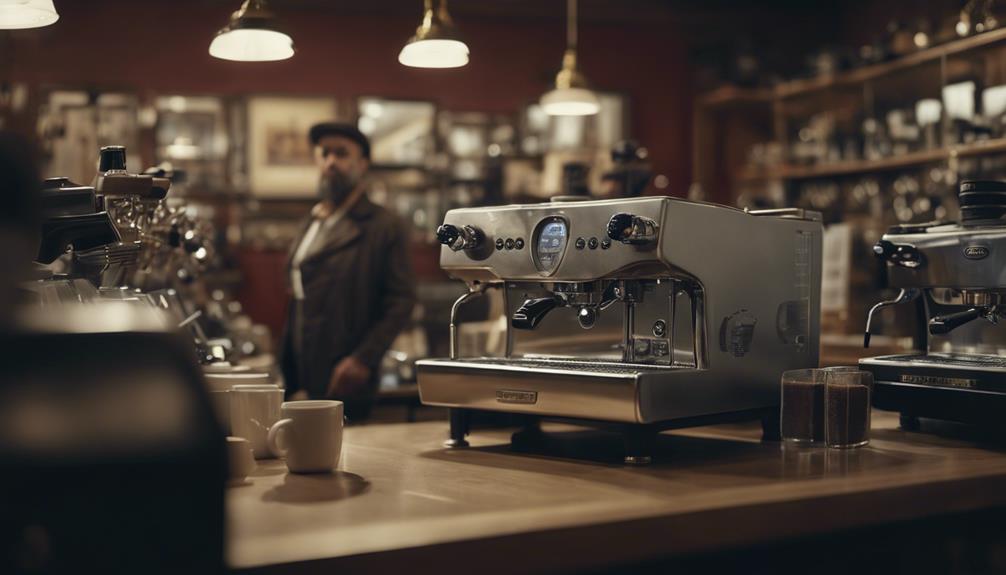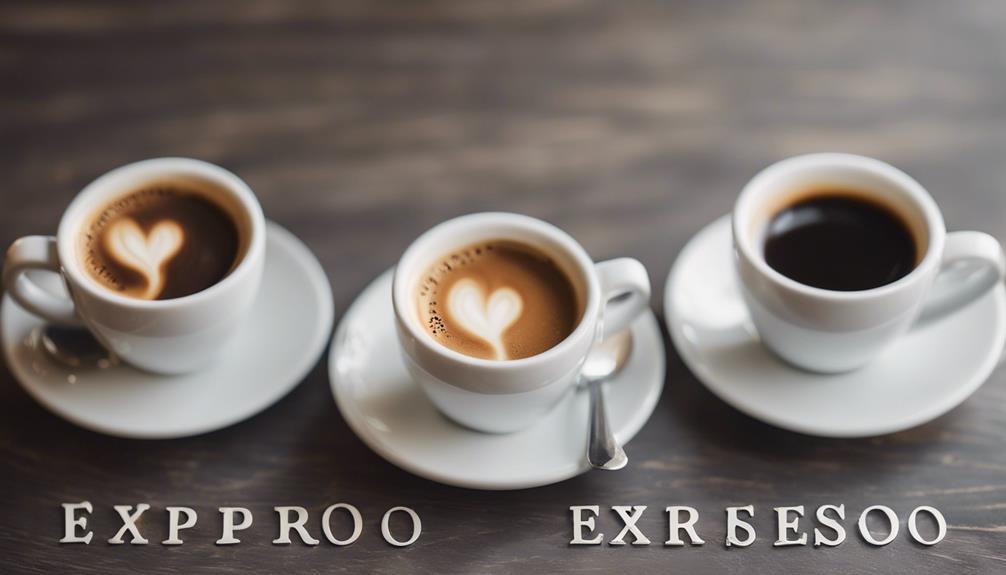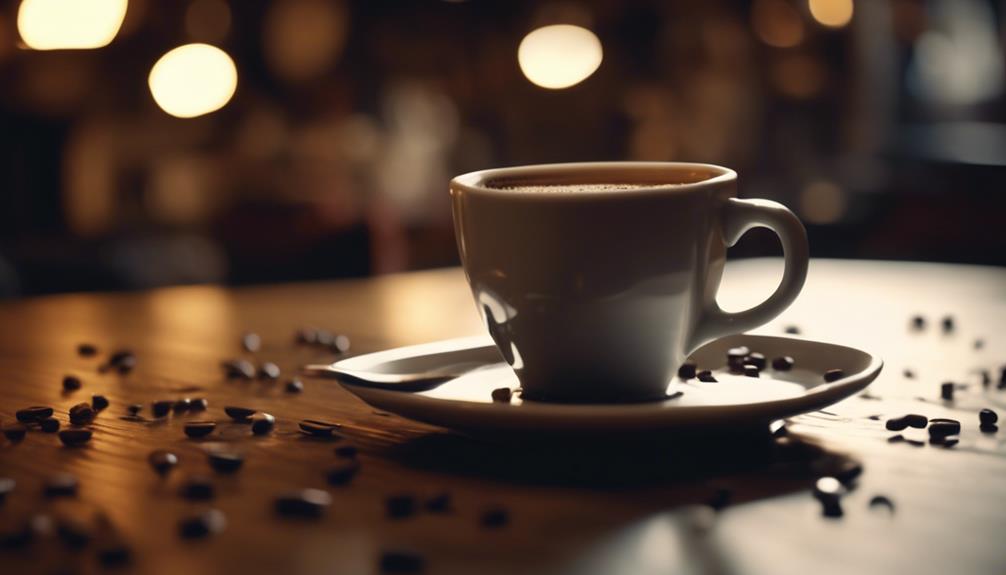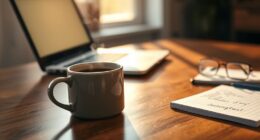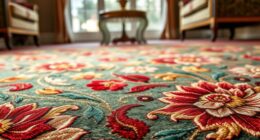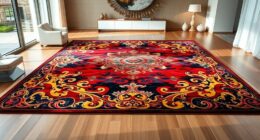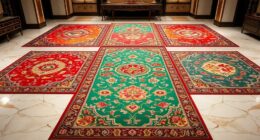You are on the verge of receiving a caffeine boost at Starbucks! A single shot of espresso contains 75 milligrams of caffeine, all packed into a small but powerful 0.75-ounce serving. This amount is nearly equal to the caffeine found in a full cup of brewed coffee! This shot will provide you with a concentrated burst of energy to jumpstart your day. It is important to remember that moderation is crucial, especially if you are sensitive to caffeine. Are you interested in learning more about maximizing your espresso experience and staying within your daily caffeine limits?
Key Takeaways
- One shot of Starbucks espresso contains 75 milligrams of caffeine.
- This amount is per 0.75 ounces, making it a concentrated dose of caffeine.
- For comparison, a standard espresso shot typically has 63 milligrams of caffeine.
- Espresso has approximately 63 milligrams of caffeine per ounce, making it a highly caffeinated beverage.
Caffeine Content Comparison
When you order a single shot of espresso at Starbucks, you're getting a caffeine boost that surpasses the average amount found in a standard shot of espresso. Specifically, you're getting 75 mg of caffeine, which is higher than the typical 63 mg found in a standard espresso shot.
To put this into perspective, a regular 8-ounce serving of brewed coffee typically contains between 96-128 mg of caffeine, spread out over a larger volume.
In contrast, espresso packs a concentrated punch, with approximately 63 mg of caffeine per ounce. This means that a single shot of Starbucks espresso contains almost as much caffeine as an entire cup of brewed coffee!
It's no wonder that espresso is often considered a more potent way to get your caffeine fix. By choosing a single shot of espresso at Starbucks, you're opting for a robust amount of caffeine that's sure to give you a noticeable energy boost.
Factors Influencing Caffeine Levels
You're likely aware that not all espresso shots are created equal, and the caffeine content can vary greatly depending on several key factors. One of the main factors is the brand, with Starbucks espresso shots containing approximately 75 mg of caffeine per 0.75 ounces. Another factor is the type of coffee beans used, as they naturally contain varying levels of caffeine.
| Factor | Description | Effect on Caffeine Content |
|---|---|---|
| Brand | Different brands use varying amounts of coffee and roasting methods | Major |
| Coffee Beans | Natural caffeine levels vary between beans | Moderate |
| Roasting | Lighter roasts retain more caffeine than darker roasts | Moderate |
| Brewing Method | Espresso vs French press, etc. | Major |
| Coffee Amount | More coffee used, higher caffeine content | Major |
The roasting process also plays a role, with lighter roasts retaining more caffeine than darker roasts. Additionally, the brewing method used, such as espresso versus French press, considerably influences the final caffeine output. Finally, the amount of coffee used in preparation also alters caffeine levels, with more coffee generally resulting in higher caffeine content. These factors can all impact the caffeine content of your espresso shot, making it essential to understand their effects.
Perception of Caffeine Effects

When you down a shot of espresso at Starbucks, you might feel a sudden energy boost due to the rapid consumption of its 75mg of caffeine.
However, you'll likely experience the effects differently than someone else, since individual tolerance to caffeine varies widely.
As you feel the effects of the espresso, keep in mind that your perception of its potency is influenced by your own tolerance and expectations.
Rapid Consumption Effects
Your rapid consumption of a single shot of espresso at Starbucks can intensify the perceived effects of caffeine, leaving you feeling more alert and energized than you would with a slower-sipped cup of brewed coffee. This is because the concentrated dose of caffeine (75mg) in an espresso shot hits your system quickly, producing a more immediate jolt. In contrast, sipping brewed coffee slows down your caffeine intake, making the effects feel less intense.
| Beverage | Caffeine Intake | Consumption Speed |
|---|---|---|
| Espresso Shot | 75mg | Rapid |
| Brewed Coffee | 60-180mg | Slow |
| Brewed Coffee (large) | 180-360mg | Slow |
As a result, you may feel a greater sense of anxiety or jitteriness from consuming an espresso shot quickly, especially if you're not used to high caffeine intake. This rapid consumption effect can be influenced by psychological factors, making some people more sensitive to caffeine's effects than others. So, be mindful of your caffeine intake and consumption speed to better manage your energy boost.
Individual Tolerance Matters
Since people's sensitivity to caffeine varies greatly, the effects of a single shot of espresso at Starbucks can range from an energizing boost to debilitating jitters, depending on individual tolerance. You might be wondering why your friend can down multiple espresso shots without batting an eye, while you're left feeling anxious after just one. It all comes down to your personal caffeine sensitivity.
If you're highly sensitive, even one shot of Starbucks espresso, containing 75mg of caffeine, can lead to symptoms like insomnia or anxiety. Your past experiences with caffeine, as well as your expectations, can also influence how you respond to its consumption. Perhaps you've had a bad experience with caffeine in the past, which makes you more prone to jitters.
Or, you might be someone who's built up a tolerance over time. It's important to assess your personal limits and adjust your caffeine intake accordingly. Remember, rapid consumption of espresso can enhance the perceived jolt of caffeine, so be mindful of your intake.
Health Recommendations
The FDA's guidelines suggest you stick to a daily caffeine intake of no more than 400 milligrams, equivalent to about four 8-ounce cups of brewed coffee.
As a responsible espresso lover, it's vital to be mindful of your caffeine consumption. A single shot of Starbucks espresso contains approximately 75 milligrams of caffeine, making it a controlled caffeine choice.
However, consuming six shots would exceed the FDA's recommended daily limit, totaling 450 milligrams of caffeine. If you're pregnant, you'll want to be even more cautious, limiting your caffeine intake to 200 milligrams per day to mitigate potential risks.
Remember, health recommendations vary, and your personal caffeine sensitivity may differ from others. It's important to listen to your body and adjust your caffeine intake accordingly.
Coffee and Espresso Equipment

When you're looking to get the perfect shot of espresso, you'll want to take into account the equipment you're using.
You've got options – from high-end espresso machines to more affordable drip coffee makers – but it's essential to invest in quality gear that can handle the nuances of coffee brewing.
Equipment Options
You can choose from a variety of coffee makers on the market, each designed to optimize a specific brewing method, whether you prefer drip coffee, French press, or espresso.
When it comes to espresso, an espresso machine is a must-have to produce the perfect shot. With the right equipment, you can control the amount of caffeine in your coffee drinks. Espresso machines, in particular, require attention to pressure and temperature settings to extract the ideal amount of caffeine and flavors.
Consumer Reports provides recommendations for different coffee makers based on performance, reliability, and user reviews, helping you make an informed choice. Investing in good equipment can enhance your overall coffee experience, ensuring consistent quality and extraction of flavors.
Whether you're a coffee connoisseur or a casual drinker, having the right tools can make all the difference. By choosing the right equipment, you can enjoy your favorite coffee drinks, including espresso, with the perfect balance of flavors and caffeine.
Quality Matters
By selecting high-quality coffee and espresso equipment, you're taking the first step towards revealing the full flavor potential of your favorite coffee drinks. Investing in excellent gear can greatly enhance the brewing process, ensuring ideal flavor extraction and overall beverage quality.
Here are four key benefits of choosing high-quality equipment:
- Advanced brewing technology: High-quality espresso machines often feature advanced brewing technology, allowing for precise control over water temperature and pressure during extraction.
- Consistent results: Durable and well-designed equipment can improve the consistency of espresso shots and brewed coffee, ensuring every cup meets your standards.
- Reliability and performance: Consumer Reports recommends coffee makers based on performance and reliability, highlighting the importance of these factors in equipment choices.
- Easy maintenance: Proper maintenance and care of coffee and espresso machines are essential for longevity and maintaining the quality of drinks produced.
Caffeine Sensitivity and Health
Genetic factors, age, and overall health can greatly impact how you respond to caffeine, making it essential to understand your individual sensitivity. You may be more sensitive to caffeine due to certain health conditions, medications, or stage of life. For instance, if you're pregnant or breastfeeding, you're advised to limit your daily caffeine intake to 200 milligrams to minimize potential risks.
Here's how your caffeine sensitivity can be affected by different factors:
| Factor | Impact on Caffeine Sensitivity |
|---|---|
| Genetic predisposition | Can increase or decrease sensitivity |
| Age | Older adults may be more sensitive |
| Health conditions | Certain conditions, like anxiety disorders, can increase sensitivity |
| Medications | Interactions with medications can alter sensitivity |
| Pregnancy/Breastfeeding | Increased sensitivity and recommended intake limits |
Keep in mind that regular caffeine consumption can lead to tolerance, requiring higher amounts to achieve the same effects. On the other hand, occasional users may experience stronger reactions to lower doses. Being aware of your individual sensitivity and adjusting your caffeine intake accordingly can help you avoid negative side effects like insomnia, jitters, and digestive issues.
Espresso at Starbucks: A Closer Look

Now that you understand how caffeine affects your body, let's take a closer look at the amount of caffeine in a single shot of espresso at Starbucks. You might be surprised to learn that a single shot of espresso at Starbucks contains a significant 75 milligrams of caffeine.
Here are some key facts about espresso at Starbucks:
- Espresso is served in a small volume: Each shot is only 0.75 ounces, making it a concentrated dose of caffeine.
- High-pressure brewing: Starbucks uses finely ground coffee and high pressure to create a rich, intense flavor.
- Espresso is the base for popular drinks: Lattes, cappuccinos, and other espresso-based drinks all start with a shot of espresso.
- You can customize to your caffeine needs: If one shot isn't enough, you can ask for multiple shots to increase the caffeine content of your drink.
As you can see, a single shot of espresso at Starbucks packs a punch when it comes to caffeine.
Whether you're looking for a quick pick-me-up or a base for your favorite espresso-based drink, Starbucks has got you covered.
Caffeine in Coffee Vs. Espresso
You might be wondering how the caffeine content of a shot of espresso compares to a cup of brewed coffee at Starbucks. Let's explore and find out.
A standard shot of Starbucks espresso contains 75 mg of caffeine per 0.75 ounces, making it a potent pick-me-up. In contrast, an 8-ounce cup of brewed coffee, like their Pike Place roast, contains around 155 mg of caffeine.
While espresso has a higher caffeine concentration per ounce, the total caffeine intake varies considerably based on serving size. Brewed coffee typically provides a greater total caffeine amount in larger servings.
To put it into perspective, an 8-ounce serving of brewed coffee averages around 12-16 mg of caffeine per ounce, whereas a shot of espresso packs a punch with 75 mg per 0.75 ounces.
Frequently Asked Questions
How Much Caffeine Is in 1 Shot of Starbucks Espresso?
You're wondering how much caffeine is in 1 shot of Starbucks espresso? You'll get a boost from 75 milligrams of caffeine in a single shot, which is higher than the average espresso shot's 63 milligrams.
How Much Caffeine Is in a Single Shot of Espresso?
You're still wondering how much caffeine is in a single shot of espresso? Okay, let me stop sipping my Starbucks latte for a sec… It's 75 milligrams, duh! Now, can I get back to my caffeine high?
Is 2 Shots of Espresso a Lot of Caffeine?
You're wondering if two shots of espresso are a lot of caffeine? Well, with 150mg in total, it's a moderate amount for most, but you might feel a stronger jolt due to the rapid intake, and it's too much for pregnant individuals.
How Much Is 1 Shot of Espresso Starbucks?
You're wondering how much is 1 shot of espresso at Starbucks, right? Well, you'll get approximately 0.75 ounces of concentrated goodness, and that translates to 75 milligrams of caffeine in a single shot. If you’re in the mood for something with a little more kick, you can always go for the Starbucks espresso pairing, which includes a shot of espresso served alongside a small treat like a piece of chocolate or a tiny pastry. It’s a great way to indulge in the rich, bold flavors of espresso while also satisfying your sweet tooth. And with the convenience of ordering through their app, you can easily customize your espresso experience with just a few taps on your phone.
Conclusion
As you've navigated the world of espresso and caffeine, remember that moderation is the key to revealing the perfect blend.
Think of caffeine as a fiery spark that can either ignite your day or fuel a wildfire of jitters. One shot of espresso at Starbucks is like a single match – it can be a gentle flicker or a raging flame, depending on your sensitivity.
So, use your newfound knowledge to strike a balance, and may your daily cup be a harmonious union of flavor and energy.


